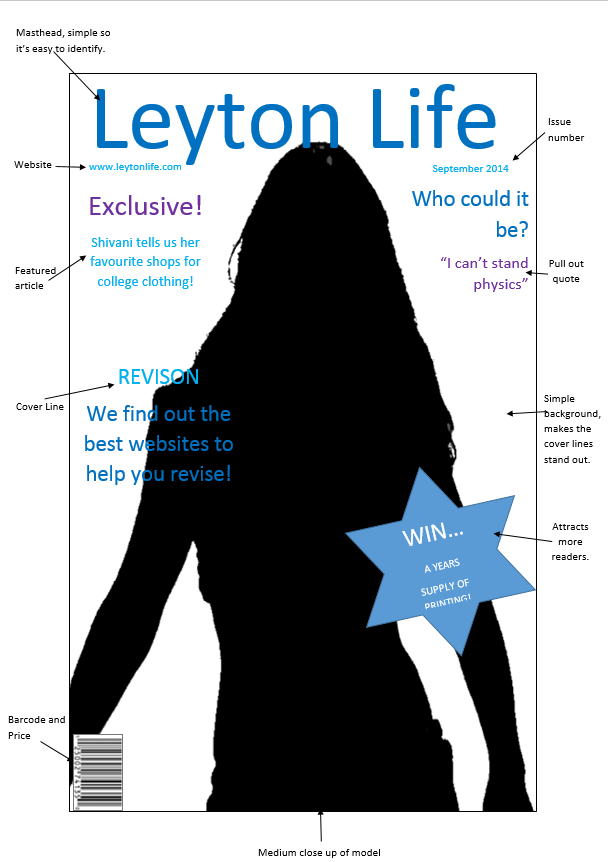
Newsstand task.
In class, as preparation for my own music magazine, I was
given a task to find newsstands which had music magazines. From doing so, we
were instructed to analyse the distribution of magazines and how they are
presented to the public in newsstand form but also in other various forms. For
the research task, I went to WHSmiths and took a picture of the music
magazines. In comparison to other stores, WHSmiths offered a large selection of
music magazines as WHSmiths is a book shop. WHSmith provides the most notably
popular magazines in the UK, although if a certain magazine isn’t available in
the store, it is possible to subscribe to them or to request an issue be made
available for you. Popular music magazines of all types of genres are available
such as Rolling Stone, Uncut, Opera Now, Pianist, Mojo, Kerrang!, Q, NME,
Computer Music, Guitarist, Beats Magazine, and more.
These were all positioned near the Photography magazines and
the Motoring magazines. The magazines are all sorted out according to
genre/interest.
The first thing I noticed when looking at the music magazine
section was the mastheads of every magazine. By having all the mastheads
visible allows the customers to be able to find their desired magazines but it
also allows the customer to view the other magazines, allowing the magazine to
promote itself and have increased sales and a larger audience. Additionally, the skyline is visible with the
majority of the magazines. The skyline gives an insight to the genre of the
music magazine. For example, Mixmag's skyline is “The world's biggest dance music & club culture
magazine". From this, we can see that Mixmag is a magazine that is
involved in club culture and dance, letting us know the genre of the magazine.
Despite having the skyline visible, the price of the
magazine is not visible, as it is normally placed at the bottom of the front
cover, next to the bar code. A possible reason for having the price at the
bottom instead of at the top, where it is visible next to the masthead and
skyline, is because the price can cause the customers not wanting to buy it,
despite having content which appeals to them.
I noticed that the Hip hop magazines have bolder colour
schemes on the cover, such as bright reds and bright yellows. In contrast, rock
magazines such as Rock Sound and Kerrang! Have a lot going on their cover
pages, such as skylines, images and loads of teasers and cover lines.
Software music magazines such as Future Music, Music Tech
and Computer Music have no cover star, but have an image(s) of electronic
software, computers and such. The music magazines either had an image of the
instrument the magazine is dedicated to (i.e. guitar, piano, drums) whilst
others have an image of a famous musician whose main instrument is that.
Teen magazines (for girls) have very crowded cover pages,
with multiple images, bright colour schemes and usually offer free posters.
Metal and hard-core magazines used a lot of black, grey/silver and red colours.
The Rock magazines were in the middle/front at eye level, whereas the R&B
and hip hop ones were further up/ at the back. The Instrument magazines were
lowest on the news stand.
Distribution of Magazines:
There are many ways magazines distribute. One form that is
the palm of our hands is applications on our phones. Many magazines currently
distribute by using applications on their phone, including some or all the
content in the hard copy of the magazine. These may be linked via a smart QR
code on the front cover of the magazines. Distribution with apps can be
beneficial to the customers, as some magazine apps are for free, such as
Arpeggio magazine, allowing them to access a majority of the content featured
in the magazine, for free. The
distribution of magazines with apps can also be beneficial for the publishers.
Another form of distribution is electronic brand
extension. Many magazines (such as
Mixmag and Maverick) use social media as a way of extending their brand and
creating an online presence. Similarly to magazine apps, the use of social
networks such as Instagram, Twitter and Facebook. They may also extend into
gigs and other events. This allows the magazine to gain a wider audience, as
many people around the world use social networks. Social media has many
benefits on the magazine, such as expanding editorial content. By using social
media, magazines are able to understand the audience and cater to their
interests. By doing so, the magazines are able to fulfil the needs of the
audience and are able to create a stable audience, as the magazines follow
their interests and the genre of music they enjoy.





